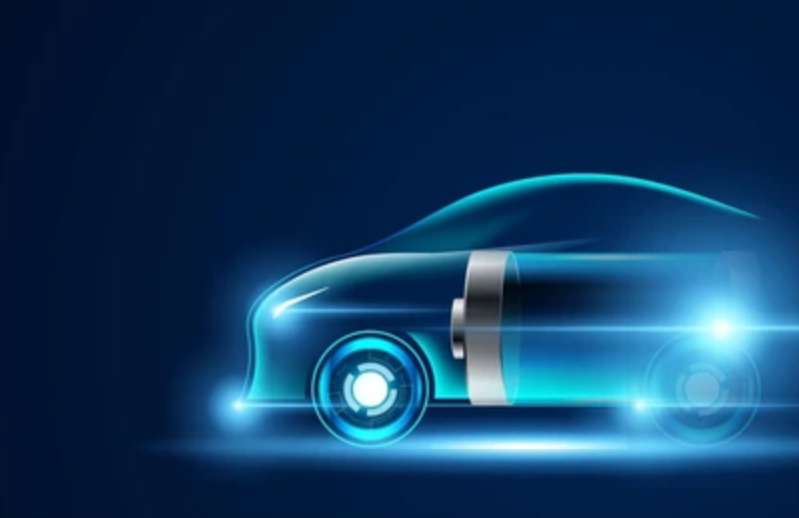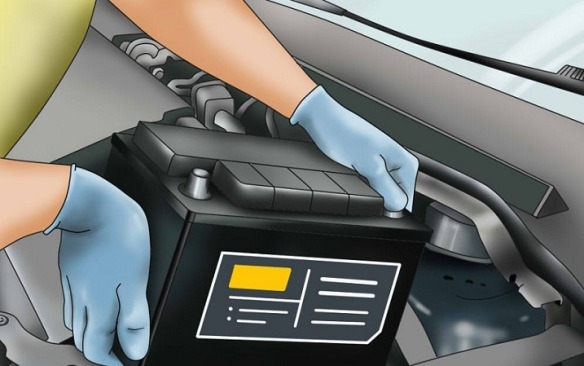ما هي بطارية Lifepo4؟ دعنا نأتي ننظر
Lithium Iron Phosphate Like other batteries, LiFePO4 batteries are made from electricity-generating electrochemical cells that power electrical devices. A LiFePO4 battery consists of a positive electrode, positive electrode, separator, electrolyte, positive and negative current collectors. The positive terminal of the battery is called the cathode and the negative terminal is called the anode. Anode terminal as Li-ion source. The electrolyte carries positively charged lithium ions from the anode to the cathode and vice versa through the separator. The movement of lithium ions generates free electrons in the anode. Thus, electrons will flow through the external circuit to the cathode, the positive terminal. So when there is an electrical load, current will flow from the positive terminal to the negative terminal connected across the battery. Batteries consist of concentric alternating layers of negative and positive electrode materials, with separator layers positioned between these layers. The battery is then filled with electrolyte, allowing ion conduction.
The manufacturing method for the cathode terminal must be able to release large amounts of lithium ions during battery operation. The most common cathode material is Licoo2, but this material has some disadvantages. Therefore, LiFePO4 can be used as a substitute for LiCoO2. More recently, anode terminals have been made from natural or synthetic graphite. However, with the advancement of technology, lithium titanate (LTO) has become a very promising anode material to replace graphite. The most commonly used electrolyte consists of lithium salts, such as LiPF6 in organic solution.
The next section discusses how LiFePO4 charge and discharge cycles work:
State of charge: positive electrode and negative electrode composed of lithium iron phosphate. Iron ions and phosphate ions form a grid, and lithium ions are loosely trapped. When the battery is charged, these lithium ions are pulled across the separator to the negative graphite electrode, which can trap and hold these crossed lithium ions. The membrane is made of a polymer (plastic) and has many small pores that allow lithium ions to pass through easily. The battery will be fully charged when all the positive lithium ions available in the cathode terminal reach the anode terminal and are correspondingly stored between the graphene layers.

Assuming four single-cell batteries in series, this converts the battery pack’s voltage to about 12 volts for analysis. LiFePO4 battery charging can be divided into two phases:
Constant current charging: In the first stage of charging, the current is kept constant, and the charging rate is 0.5C, which means the battery will be charged at half capacity. For example, when charging a battery with a capacity of 200Ah, the charge rate will remain constant at 100Amp.
During constant current charging, the charging voltage of the battery will slowly rise to a “sink” voltage of 14.4 V.
Saturation charging: Once the battery is 90% charged, that is, the absorption voltage is reached, the battery will enter the second charging stage, which is called saturation charging. At this point, the battery voltage remains constant and the current will drop steadily. 100% state of charge (SOC) is reached once the current has dropped to approximately 5% to 10% of the battery’s Ah rating.
Discharge state: As mentioned earlier, during the charging cycle of LiFePO4 in the battery, the positive lithium ions released from the positive electrode move to the negative electrode through the electrolyte and are stored there. When all available lithium ions have reached the negative terminal, the battery can be fully charged. When a rechargeable battery is connected to an electrical load, positive ions move through the separator from the negative terminal back to the positive terminal. At the same time, electrons flow through the external circuit, causing current to flow through the electrical load circuit, and the battery releases its stored energy. Electrons cannot flow through the electrolyte because of the insulating barrier (i.e., the separator). When the battery is fully discharged, all lithium ions are moved back to the lithium iron phosphate electrode.
-
 As the world becomes more reliant on portable technology, the demand for high-performance batteries has skyrocketed. One area that has seen significant growth is the automotive industry, where car manufacturers are constantly seeking ways to improve the performance of their vehicles. One of the ways to achieve this is through the use of lithium starter batteries. A high-performance 12V...اقرأ أكثر
As the world becomes more reliant on portable technology, the demand for high-performance batteries has skyrocketed. One area that has seen significant growth is the automotive industry, where car manufacturers are constantly seeking ways to improve the performance of their vehicles. One of the ways to achieve this is through the use of lithium starter batteries. A high-performance 12V...اقرأ أكثر -
 أدى التقدم التكنولوجي إلى تحسن كبير في حلول الطاقة. أحد هذه الابتكارات هو بطارية LiFePO4 عالية السعة 12V 100AH. تُحدث بطارية ليثيوم فوسفات الحديد (LiFePO4) ثورة في طريقة تخزين الطاقة واستخدامها بكفاءة. توفر بطارية 12V 100AH LiFePO4 كثافة طاقة عالية وعمرًا طويلًا مقارنة ببطاريات الرصاص الحمضية التقليدية. هذا...اقرأ أكثر
أدى التقدم التكنولوجي إلى تحسن كبير في حلول الطاقة. أحد هذه الابتكارات هو بطارية LiFePO4 عالية السعة 12V 100AH. تُحدث بطارية ليثيوم فوسفات الحديد (LiFePO4) ثورة في طريقة تخزين الطاقة واستخدامها بكفاءة. توفر بطارية 12V 100AH LiFePO4 كثافة طاقة عالية وعمرًا طويلًا مقارنة ببطاريات الرصاص الحمضية التقليدية. هذا...اقرأ أكثر -
 When it comes to the railroad industry, reliability is everything. Trains need to be on time, efficient, and most importantly, safe. One important component of a train\'s reliability is its starter battery. Without a reliable starter battery, a locomotive can be unable to start or even shut down mid-operation, causing delays and potentially dangerous situations. A locomotive starter battery...اقرأ أكثر
When it comes to the railroad industry, reliability is everything. Trains need to be on time, efficient, and most importantly, safe. One important component of a train\'s reliability is its starter battery. Without a reliable starter battery, a locomotive can be unable to start or even shut down mid-operation, causing delays and potentially dangerous situations. A locomotive starter battery...اقرأ أكثر -
 Introduction In recent years, the demand for high-performance and long-lasting energy solutions has been increasing rapidly. As a result, lithium iron phosphate (LiFePO4) 48V batteries have emerged as a popular choice in various industries, including renewable energy, electric vehicles, and off-grid power systems. This article aims to explore the features and benefits of LiFePO4 48V batteries, highlighting their high...اقرأ أكثر
Introduction In recent years, the demand for high-performance and long-lasting energy solutions has been increasing rapidly. As a result, lithium iron phosphate (LiFePO4) 48V batteries have emerged as a popular choice in various industries, including renewable energy, electric vehicles, and off-grid power systems. This article aims to explore the features and benefits of LiFePO4 48V batteries, highlighting their high...اقرأ أكثر -
 Electric vehicles (EVs) have become increasingly popular in recent years as a more sustainable and environmentally-friendly mode of transportation. One of the key components that enable the operation of EVs is the lithium battery. Lithium batteries have gained significant attention due to their high energy density and long lifespan. However, there are several advantages and challenges associated with the use...اقرأ أكثر
Electric vehicles (EVs) have become increasingly popular in recent years as a more sustainable and environmentally-friendly mode of transportation. One of the key components that enable the operation of EVs is the lithium battery. Lithium batteries have gained significant attention due to their high energy density and long lifespan. However, there are several advantages and challenges associated with the use...اقرأ أكثر -
 In recent years, the demand for high-energy lithium batteries has been growing rapidly, especially in the field of renewable energy and electric vehicles. Among the various types of lithium batteries, the LifePO4 (Lithium Iron Phosphate) battery has gained increasing popularity due to its high safety, long cycle life, and excellent performance at high temperatures. The High-Energy 12V 100Ah Lithium Battery...اقرأ أكثر
In recent years, the demand for high-energy lithium batteries has been growing rapidly, especially in the field of renewable energy and electric vehicles. Among the various types of lithium batteries, the LifePO4 (Lithium Iron Phosphate) battery has gained increasing popularity due to its high safety, long cycle life, and excellent performance at high temperatures. The High-Energy 12V 100Ah Lithium Battery...اقرأ أكثر -
 As the world becomes increasingly reliant on technology, reliable power supply is a necessity. The High-Capacity 12V 100Ah LiFePO4 Battery Pack is a solution that provides a long-lasting, dependable source of power. This battery pack is made from Lithium Iron Phosphate (LiFePO4), which is known for its safety, stability, and high energy density. Compared to traditional lead-acid batteries, LiFePO4...اقرأ أكثر
As the world becomes increasingly reliant on technology, reliable power supply is a necessity. The High-Capacity 12V 100Ah LiFePO4 Battery Pack is a solution that provides a long-lasting, dependable source of power. This battery pack is made from Lithium Iron Phosphate (LiFePO4), which is known for its safety, stability, and high energy density. Compared to traditional lead-acid batteries, LiFePO4...اقرأ أكثر

